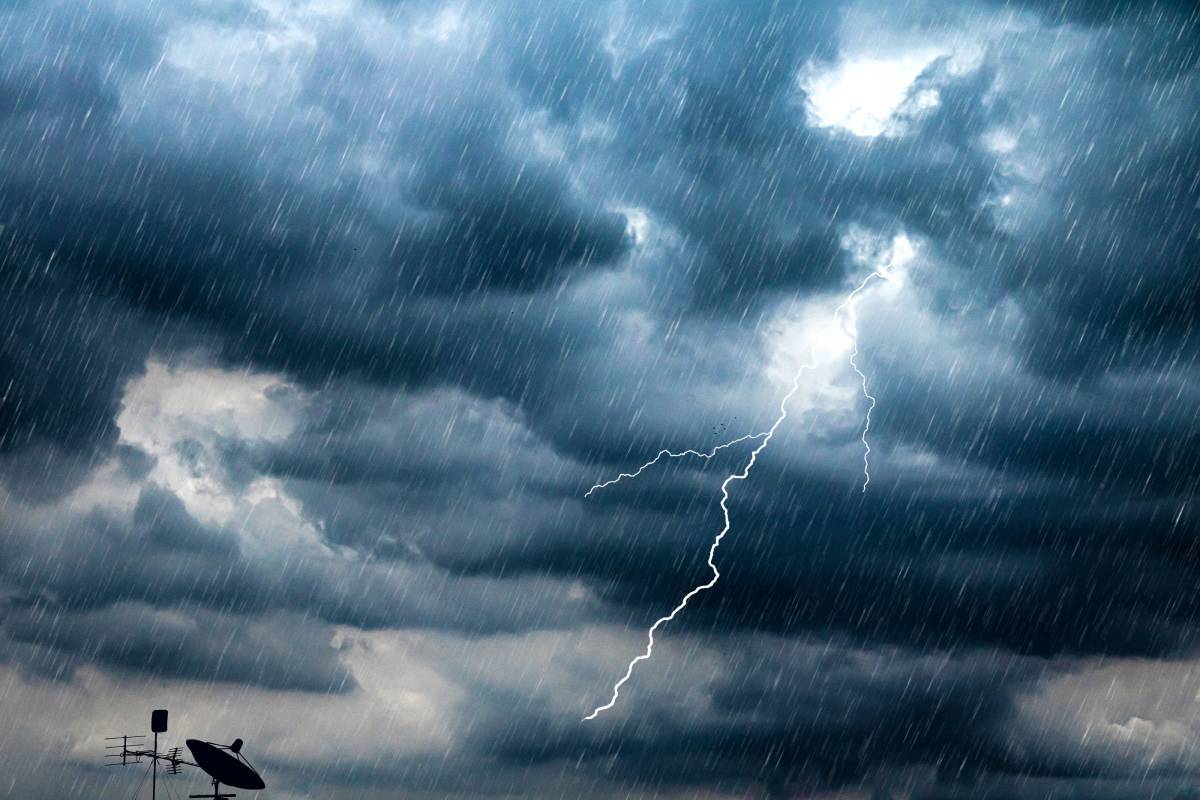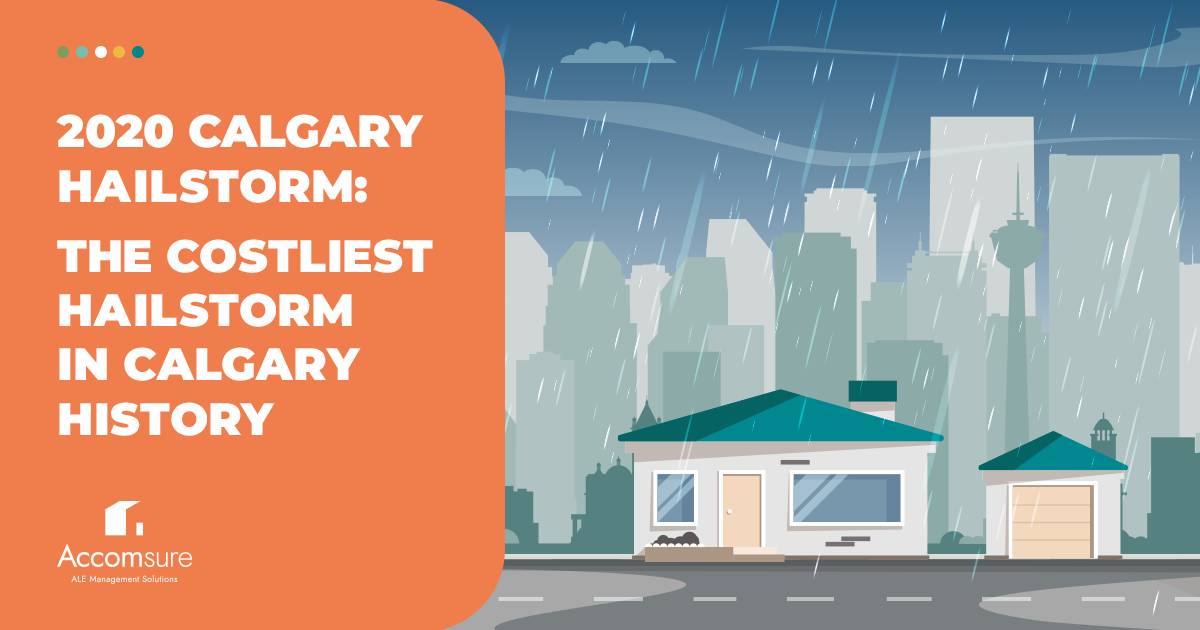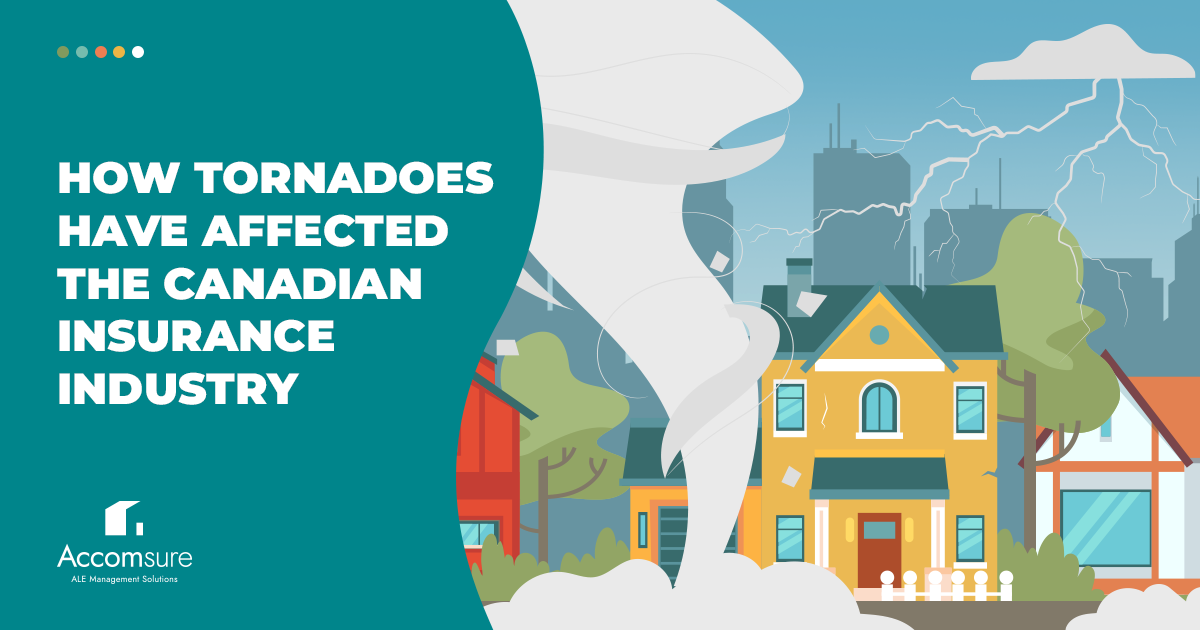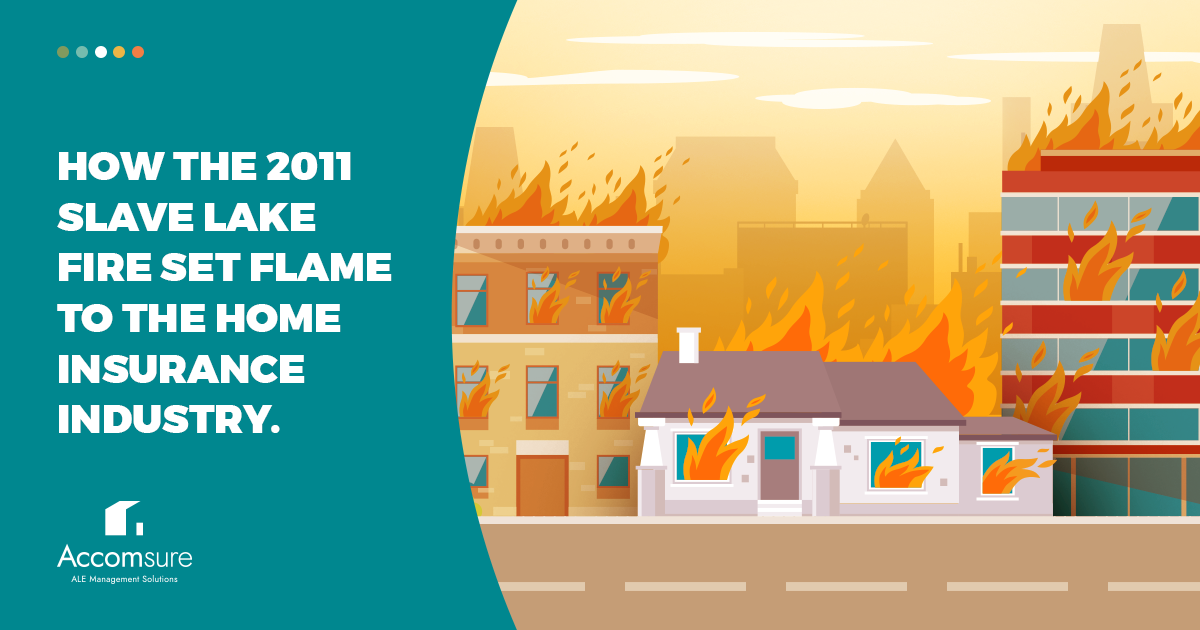On June 13th, 2020, a massive hailstorm stormed through Calgary, Alberta. With over 70,000 claims and over $1.3 billion in insured damages, this was the costliest hailstorm in Calgary’s history.
In this blog, we will reflect on this detrimental event and walk through the severe storm both policyholders and adjusters had to face in 2020. Be sure to read until the end so you can learn how to be better prepared for future hailstorms.
The 2020 Calgary Hailstorm
At 6:40 pm on June 13th, 2020, the Calgary International Airport reported signs of thunder in the northeast Calgary region. This was shortly followed by a severe thunderstorm warning by Environment Canada.
In just 6 minutes, the temperature dropped 5.4 degrees, and hailstones the size of tennis balls were falling out of the sky, shattering windows, ripping off siding, and causing hail damage to commercial buildings and residential homes across Calgary.
By 7:09 pm, residents could look out of their shattered windows at a street covered in a blanket of hailstones. Unfortunately, just minutes later, around 7:16 pm, the thunder started roaring again, and another round of hail hit Calgary, damaging these homes even worse than before.
On top of hailstones crashing down and damaging homes, the stones began piling up in storm drains, causing overland flooding in some North Calgary communities, like Saddle Ridge. Many Calgarians were trapped in their vehicle, forcing emergency response crews to rescue stranded Calgarians by boat. This storm created quite a commotion, leaving policyholders hopeless, frightened, and stressed.
Statistics Regarding the Calgary Hailstorm
Shortly after the event, the 2020 Calgary hailstorm was named the costliest natural disaster in Calgary and the fourth costliest natural disaster in Canadian history. The following are statistics that better define just how terrible this storm was for policyholders:
- 10,000+ policyholders lost power in their homes (WP)
- Hailstones crashed down as fast as 100km/h (TWN)
- 70,000 damaged homes (TWN)
- $1.3 billion in insured damage (IBC)
- 2.54 cm-sized hail stones (WP)
Impacts on the Insurance Industry
With 70,000 claims, insurance companies were flooded with an overwhelming workload. According to the Insurance Bureau of Canada, most insurance claims involved damages to personal property, particularly with the roof and siding of homes made from plastic or synthetic materials.
Additionally, insurance adjusters were getting bombarded with constant questions on when home repairs would be completed and when they would receive their insurance payout. According to CTV News, 70% of claims were resolved in the first six months, with 30% left unresolved for over a year. The 30% were waiting on supplies, materials, and contractors to complete their damage repairs. Adjusters were burnt out from all the claims, and the upset policyholders. It’s safe to say that this storm was a learning experience for adjusters.
Prepare for the Next Hailstorm Disaster With ALE Management

Since Calgary is located in hailstorm alley, a strip of southern Alberta that is notoriously affected by hailstorms, policyholders and adjusters have no choice but to move past this event and prepare for the next one.
Unfortunately, climate change experts predict that we’re just at the beginning of costly disasters and need to prepare for larger, more severe weather events. When these weather events arise, claims will rise, making heavier workloads for adjusters.
Since you can’t predict the next severe weather event, you need to ensure you’re prepared. One of the best ways to stay ready for your next flood of claims is to work with an ALE Management company like Accomsure.
Accomsure will help you help your policyholders in times of uncertainty. We will support your policyholders and their immediate needs, so you can focus directly on their claims. From positive customer service to finding temporary accommodations, Accomsure has you covered. Contact Accomure today, and be thankful tomorrow.




